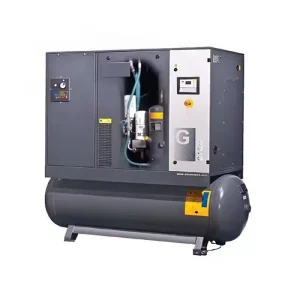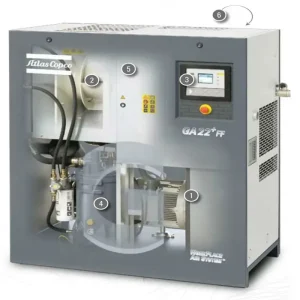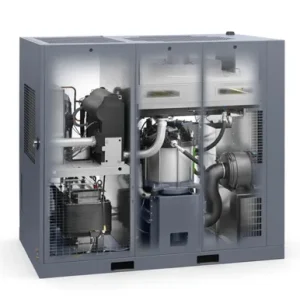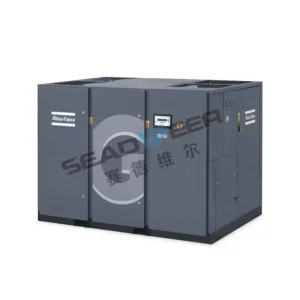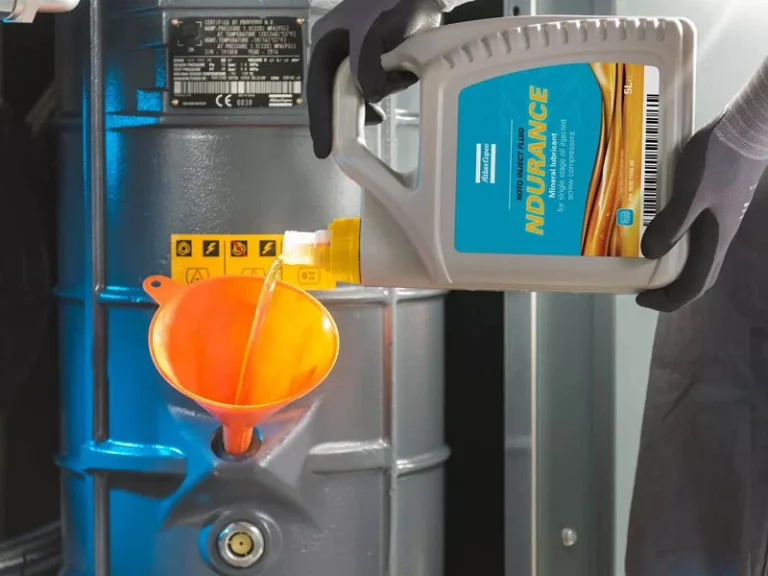Compressed air is widely used in various industrial and commercial sectors, serving as the power source for many critical operations. From powering pneumatic tools to supporting complex manufacturing processes, selecting the right air compressor is crucial for ensuring operational efficiency, cost-effectiveness, and long-term reliability. Improper selection can lead not only to wasted energy and reduced performance but also to premature equipment wear and increased maintenance costs. Therefore, a comprehensive understanding of the key factors influencing air compressor selection is essential for technical professionals and decision-makers.
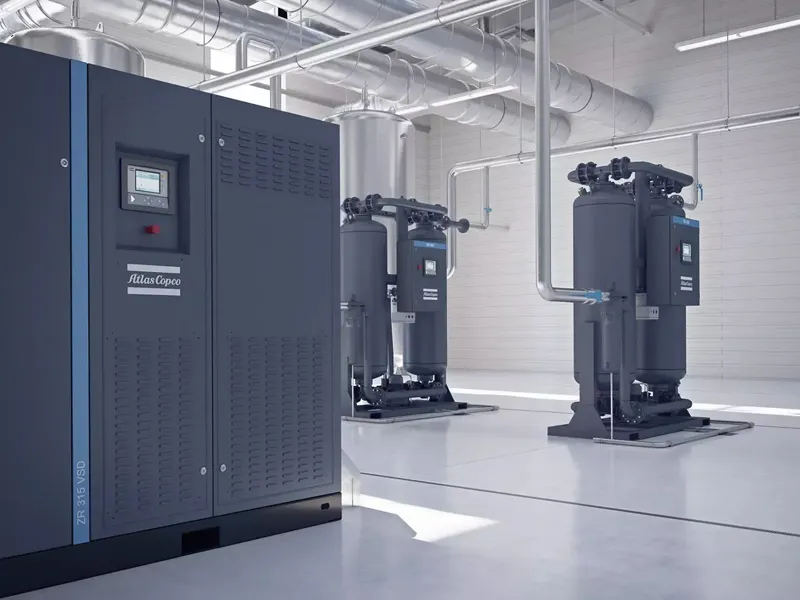
The initial investment in an air compressor is only a small fraction of its total life cycle cost, with energy consumption being the largest expenditure. Studies have shown that energy costs can account for 70% to 90% of the total cost of ownership of a compressor. This means that even if the initial purchase price of a compressor is low, an inefficient model will incur higher total expenses over its lifespan due to increased electricity consumption. This understanding underscores the importance of looking beyond upfront costs during the selection process and focusing on the total cost of ownership, where energy efficiency plays a dominant role.
Inappropriate air compressor selection can lead to significant inefficiencies, increased energy consumption, premature wear, and higher maintenance costs. For example, an undersized compressor may result in pressure drops and equipment overload, while an oversized compressor will waste energy and incur higher acquisition costs. Therefore, a thorough understanding of application needs and compressor characteristics is essential to avoid these problems. Detailed analysis of air demand and pressure requirements is crucial to prevent these shortcomings.
Contents
- 1 Understanding Different Types of Air Compressors
- 2 Key Factors Influencing Air Compressor Selection
- 3 Matching Air Compressor Types to Specific Applications
- 4 Energy Efficiency of Different Air Compressor Technologies
- 5 Maintenance Requirements and Costs
- 6 The Role of Air Filters in Compressed Air Systems
- 7 Case Studies
- 8 Reliable Sources of Information and Further Guidance
- 9 Conclusion and Recommendations
- 10 Reference
- 11 Related Products
Understanding Different Types of Air Compressors
Air compressors are primarily classified into several types based on their working principles: reciprocating (piston), rotary screw, centrifugal, and scroll. Each type has its unique operating mechanism, typical applications, advantages, and disadvantages.
Reciprocating (Piston) Compressors operate by compressing air within a cylinder using a piston driven by a crankshaft. This type of compressor can be single-acting or double-acting, as well as single-stage or multi-stage. During the intake stroke, the piston moves away from the cylinder head, reducing the pressure inside the cylinder, which allows gas to be drawn in through an inlet valve. During the compression stroke, the piston moves towards the cylinder head, reducing the volume and increasing the pressure of the trapped gas. This high-pressure gas is then expelled through an outlet valve. Reciprocating compressors are commonly used for intermittent use, smaller workshops, automotive applications, and applications requiring high pressure (e.g., bottling, alternative fuel filling stations).
The advantages of reciprocating compressors include lower initial cost, suitability for high pressure, versatility, and ease of maintenance. However, they also have some disadvantages, such as higher operating noise, lower efficiency for continuous use, higher maintenance due to more moving parts, and vibration. While reciprocating compressors have a lower initial cost , their energy efficiency is generally lower compared to rotary screw compressors in continuous operation. This highlights the trade-off between initial investment and long-term operating costs. Research indicates that reciprocating compressors are better suited for intermittent duty and typically have higher energy consumption per unit of compressed air produced over extended periods compared to rotary screw compressors, which are designed for continuous operation and often have better energy efficiency. This suggests that for applications requiring a constant air flow, the higher initial cost of a rotary screw compressor may be justified by lower long-term energy expenses.
Rotary Screw Compressors use two intermeshing rotating positive displacement helical screws (rotors) to force gas into a smaller space, thus compressing it. These compressors are commonly used for continuous operation in commercial and industrial settings and can be either fixed or portable. They range in power from 2.2 kW (3 hp) to over 890 kW (1200 hp) and can handle pressures from low to moderately high (> 8.3 MPa or 1200 psig). Rotary screw compressors are commercially available in oil-flooded, water-flooded, and oil-free versions.
The advantages of rotary screw compressors include continuous operation capability, reliability, high efficiency, less vibration, larger capacity, and the ability to operate at variable speeds. However, they also have some disadvantages, such as higher initial cost, the need for specialized technicians for complex maintenance, and the risk of oil contamination in some types. For industrial applications requiring a continuous air flow, rotary screw compressors are often the preferred choice, offering better energy efficiency compared to reciprocating compressors in such scenarios. Numerous studies highlight the continuous operation capability and higher efficiency of rotary screw compressors in industrial uses, especially where constant air demand is needed. This indicates that for factories with sustained air requirements, investing in rotary screw compressors can lead to improved productivity and reduced energy costs, whereas reciprocating compressors may struggle with prolonged operation.
Centrifugal Compressors work by using a rotating disk or impeller to increase the velocity of a gas within a shaped housing. The gas is forced to the rim of the impeller, and this kinetic energy is then converted into pressure energy by a diffuser section (divergent duct). Centrifugal compressors are primarily used for continuous, stationary service in industries such as oil refineries, chemical and petrochemical plants, and natural gas processing plants. They are also extensively used in large refrigeration and air conditioning systems, as well as in many large snowmaking operations (like ski resorts). Additionally, they are used as superchargers and turbochargers in internal combustion engines, and as the final compression stage of small or medium-sized gas turbine engines.
Centrifugal compressors are the largest type of compressor available and offer higher efficiency at partial loads. They can be oil-free when using air or magnetic bearings, which increases the heat transfer coefficient in evaporators and condensers. Compared to reciprocating compressors, they weigh up to 90% less and occupy 50% less space. They are also more reliable and cost less to maintain due to fewer components exposed to wear, and they generate minimal vibration. The main disadvantages of centrifugal compressors are their higher initial cost and the need for highly precise CNC machining.
The impeller requires high-speed rotation, making small compressors impractical. Surging (gas flow reversal that can cause serious damage) is more likely to occur in centrifugal compressors. Surging is caused by a pressure on the discharge side that is higher than the output pressure of the compressor, leading to oscillations in gas flow. Centrifugal compressors excel in applications requiring extremely high air volumes, typically operating at moderate pressures. This makes them ideal for specific large-scale industrial processes. The description of centrifugal compressors consistently emphasizes their ability to handle large volumes of air. This suggests their advantage lies in industries with extremely high air demand, where other types of compressors might be inefficient or inadequate.
Scroll Compressors, also known as scroll pumps and scroll vacuum pumps, use two interleaved spiral-like vanes to compress fluids such as liquids and gases. The vane geometry can be involute, Archimedean spiral, or hybrid curves. Scroll compressors typically have one fixed scroll and another that orbits eccentrically without rotating. This orbital motion traps and compresses pockets of fluid between the scrolls. The minimal clearance volume between the fixed and orbiting scrolls leads to a very high volumetric efficiency. These compressors are widely used in air conditioning and refrigeration systems. They were also used as the supercharger on Volkswagen G60 and G40 engines in the early 1990s.
The advantages of scroll compressors include smoother, quieter, and more reliable operation; they are lighter and smaller than reciprocating compressors for the same capacity; they have fewer moving parts; and they are more efficient than reciprocating compressors due to fewer losses from clearance volume and the absence of valves. They also have less surging and vibration compared to reciprocating and rolling piston compressors. However, scroll compressors are generally more expensive than reciprocating compressors.
They have lower efficiency and smaller capacity compared to rotary screw and centrifugal compressors. Additionally, scroll compressors are often more difficult to repair. Scroll compressors uniquely combine quiet operation with oil-free air delivery. This makes them particularly suitable for noise-sensitive environments and applications where air purity is critical. The emphasis on quiet operation and oil-free models in the description of scroll compressors suggests their suitability for specific environments like hospitals, dental clinics, and food processing plants, where noise and air contamination are major concerns.
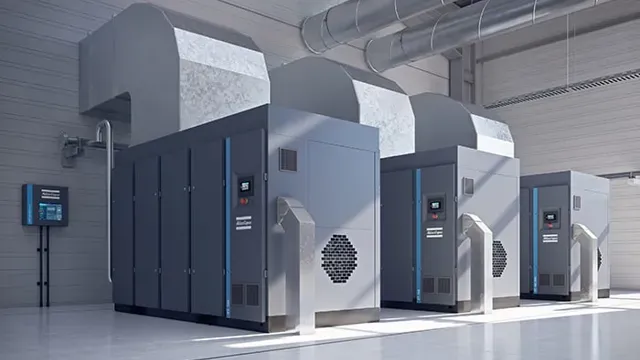
Key Factors Influencing Air Compressor Selection
Selecting the right air compressor for a specific application requires careful consideration of several key factors. These factors include the required air pressure and flow rate, duty cycle, power source, noise level, and space limitations.
Required Air Pressure (PSI) and Flow Rate (CFM) are among the most critical considerations when selecting an air compressor. PSI (Pounds per Square Inch) is determined by the highest pressure requirement of the tools or applications. It is advisable to choose a compressor with a slightly higher PSI than needed to account for pressure drops. CFM (Cubic Feet per Minute) represents the volume of air delivered per minute and depends on the air consumption of the connected tools or processes. Calculate the total CFM requirement by considering the tools used simultaneously and adding a safety margin (20-30% or even 50%).
Correctly calculating CFM and PSI needs is essential to avoid an undersized compressor that leads to performance issues or an oversized compressor that wastes energy. This necessitates a thorough assessment of current and potential future air demands. Research indicates that using tools with insufficient CFM causes the compressor to overwork, while insufficient PSI results in tools not functioning properly. Conversely, an oversized compressor will consume unnecessary energy. Therefore, a detailed analysis of the specifications of all connected equipment and potential future needs is crucial for optimizing compressor sizing.
Duty Cycle refers to the ratio of the compressor’s operating time to its downtime. For continuous operation, a compressor with a high duty cycle is required. Reciprocating compressors typically have a lower duty cycle compared to rotary screw compressors. Matching the compressor’s duty cycle to the application needs is crucial to prevent overheating and ensure longevity. Continuous operation requires compressors designed for high duty cycles. Using a compressor with a low duty cycle for continuous operation will lead to overheating, and its lifespan will be significantly reduced. Conversely, using a high duty cycle compressor for intermittent tasks may result in a higher initial cost without fully utilizing its potential. Therefore, understanding usage patterns is essential for selecting a compressor with an appropriate duty cycle.
Power Source (Electric vs. Gas) is another critical factor. Electric compressors are convenient for indoor use. Voltage and breaker ratings need to be considered during selection. Gas compressors offer portability for outdoor or remote locations. Fuel costs and emissions need to be considered during selection. The choice between electric and gas primarily depends on the operating environment and the need for portability. Electric power is generally preferred for indoor and stationary use, while gas is more suitable for mobile applications. Electric compressors are ideal for environments with readily available electricity, such as workshops and factories, offering cleaner operation. Gas compressors provide the necessary flexibility for construction sites or remote areas where electricity may not be accessible. The decision should be based on the primary use case and available infrastructure.
Noise Level can be an important factor when working indoors or in residential areas. Reciprocating compressors tend to be noisier than rotary screw or scroll compressors. Consider noise reduction technologies or enclosures. Noise level should be a key consideration for work environments where noise can be disruptive or harmful. Selecting a quieter compressor type or using noise reduction measures may be necessary. In environments such as hospitals, offices, or even residential areas, the noise generated by the compressor can be a significant concern. Choosing a compressor with a lower decibel rating or implementing noise reduction strategies like enclosures can help create a more comfortable and efficient workspace.
Space Limitations are also an important factor to consider. Consider the physical dimensions and type (portable vs. stationary) based on the available space and intended use. Stationary compressors are suitable for fixed locations, while portable compressors offer flexibility. Integrated compressor and dryer units can save space. The actual footprint of the compressor must be compatible with the available space at the installation site. Consideration also needs to be given to the compressor itself as well as any clearance required for operation and maintenance. Whether the compressor needs to be moved frequently or will remain in a fixed location will determine the choice between a portable or stationary model. Additionally, the dimensions of the compressor and the clearance needed for ventilation and maintenance must be factored into the space planning.
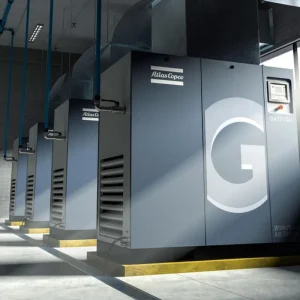
Matching Air Compressor Types to Specific Applications
Different types of air compressors are best suited for different industrial and commercial applications, depending on their specific characteristics and capabilities.
In industrial applications, rotary screw compressors are widely used to power pneumatic tools, assembly lines, and automated machinery. For sensitive applications such as food and beverage or pharmaceutical, oil-free scroll or centrifugal compressors are essential. In the automotive industry, reciprocating compressors are common in repair shops for powering various pneumatic tools and paint spraying applications. Rotary screw compressors are used in manufacturing plants. In the construction industry, portable gas-powered reciprocating or rotary screw compressors are used to power pneumatic tools on construction sites.
In agriculture, reciprocating compressors are used for various tasks such as spraying crops and powering farm equipment. In the energy sector, centrifugal and axial compressors are used for large-scale operations like gas turbines and natural gas processing. For the pharmaceutical industry, oil-free scroll or centrifugal compressors are crucial for maintaining air purity in production processes. For the food and beverage industry, oil-free scroll or centrifugal compressors are required to prevent contamination during processing and packaging.
In commercial applications, workshops often use smaller electric reciprocating compressors for intermittent tasks and powering basic pneumatic tools. Small businesses may choose between reciprocating or smaller rotary screw compressors depending on their air demand. Medical/dental clinics prefer oil-free air compressors due to their quiet operation and clean air supply. Dry cleaners may use reciprocating or rotary screw compressors to power laundry presses and cleaning guns. In HVAC systems, scroll compressors are commonly used in air conditioning units.
The choice of compressor type largely depends on the specific needs of the application and the environmental conditions. Factors such as required air quality, pressure, flow rate, and duty cycle determine the most suitable selection. For example, industries with strict air purity requirements, such as pharmaceuticals, cannot use oil-lubricated compressors, while construction sites need robust and portable equipment. This highlights the importance of understanding the unique demands of each application before making a selection.
Energy Efficiency of Different Air Compressor Technologies
Different types of air compressors and their control methods vary significantly in terms of energy efficiency.
Generally, rotary screw compressors with variable speed drives (VSD) perform best in terms of energy efficiency, especially when operating at partial loads. Load/unload control in rotary screw compressors can consume a significant amount of power even when unloaded. Modulation control can be less efficient at lower loads. For higher pressure applications, two-stage reciprocating compressors can offer better efficiency compared to single-stage units. Centrifugal compressors can be very efficient at their design point and also have good efficiency at partial loads. Scroll compressors are generally energy-efficient within their capacity range.
The following table compares the percentage of power consumption for various compressor control modes at different load levels (based on ):
Table 1: Energy Efficiency Comparison of Compressor Control Modes
| Load Percentage | Modulation Control | Load/Unload (1 gal/CFM Receiver) | Load/Unload (10 gal/CFM Receiver) | Variable Speed Drive |
|---|---|---|---|---|
| 100 | 100% | 100% | 100% | 102% |
| 75 | 92% | 96% | 81% | 73% |
| 65 | 89% | 92% | 77% | 64% |
| 50 | 85% | 86% | 67% | 49% |
| 25 | 78% | 69% | 46% | 25% |
| 10 | 73% | 46% | 32% | 10% |
Selecting the correct control method (e.g., VSD for fluctuating demand) can significantly impact energy consumption and operating costs. The U.S. Department of Energy (DOE) has implemented isentropic efficiency standards for air compressors, which will be mandatory by 2025. These standards specify minimum efficiency levels that should be considered during the selection process.
Maintenance Requirements and Costs
Different types of air compressors vary significantly in their maintenance requirements and associated costs.
Reciprocating compressors typically require more frequent maintenance due to their larger number of moving parts. Rotary screw compressors require specialized servicing by professionals for components like screws and oil separators. Their maintenance needs may be lower compared to reciprocating compressors, but the cost of specialized repairs can be higher. Centrifugal compressors have fewer moving parts, potentially leading to lower maintenance requirements, but the initial cost and complex installation can be a factor. Scroll compressors have the fewest moving parts, resulting in minimal maintenance needs. However, repairs can be complex and costly.
The following table compares the maintenance frequency and complexity for reciprocating, rotary screw, centrifugal, and scroll compressors (based on and ):
Table 2: Maintenance Comparison of Air Compressor Types
| Feature | Reciprocating | Rotary Screw | Centrifugal | Scroll |
|---|---|---|---|---|
| Maintenance | Frequent | Professional required | Low | Minimal |
| Energy Efficiency | Moderate | High | Moderate | High |
| Cost | Low | Moderate to High | High | Moderate |
Regular and proper maintenance is crucial for extending the lifespan of any air compressor and maintaining its efficiency. Neglecting maintenance can lead to increased energy consumption and costly repairs.
The Role of Air Filters in Compressed Air Systems
Air filters play a vital role in compressed air systems. They remove contaminants such as dust, oil, and water, protecting downstream equipment and ensuring air quality. Common types of filters include particulate filters, coalescing filters (for removing oil and water aerosols), and activated carbon filters (for removing odors and vapors). Filtration efficiency is measured by the percentage of contaminant removal at a specific micron size. High-efficiency filters can remove up to 99.9999% of contaminants.
Air filters improve energy efficiency by preventing pressure drops caused by contaminants. Clogged filters increase pressure drop, leading to higher energy consumption (a 10 psig pressure drop can increase energy costs by 5%). Regular maintenance and timely replacement of filter elements are essential for maintaining efficiency. Service indicators often signal when replacement is needed. Poorly maintained air filters can result in equipment damage, reduced efficiency, product contamination, and increased operating costs.
Air filters are critical components for ensuring compressed air quality, protecting downstream equipment, and optimizing energy efficiency. Proper selection and maintenance of filters are essential. Different types of air filters vary in their efficiency in removing specific contaminants. Selecting the appropriate filter type and efficiency rating based on the air quality requirements of the application is crucial. For example, applications requiring oil-free air need coalescing and activated carbon filters in addition to particulate filters. Understanding the specific contaminants present in the compressed air and the required purity level is vital for choosing the correct filter combination.
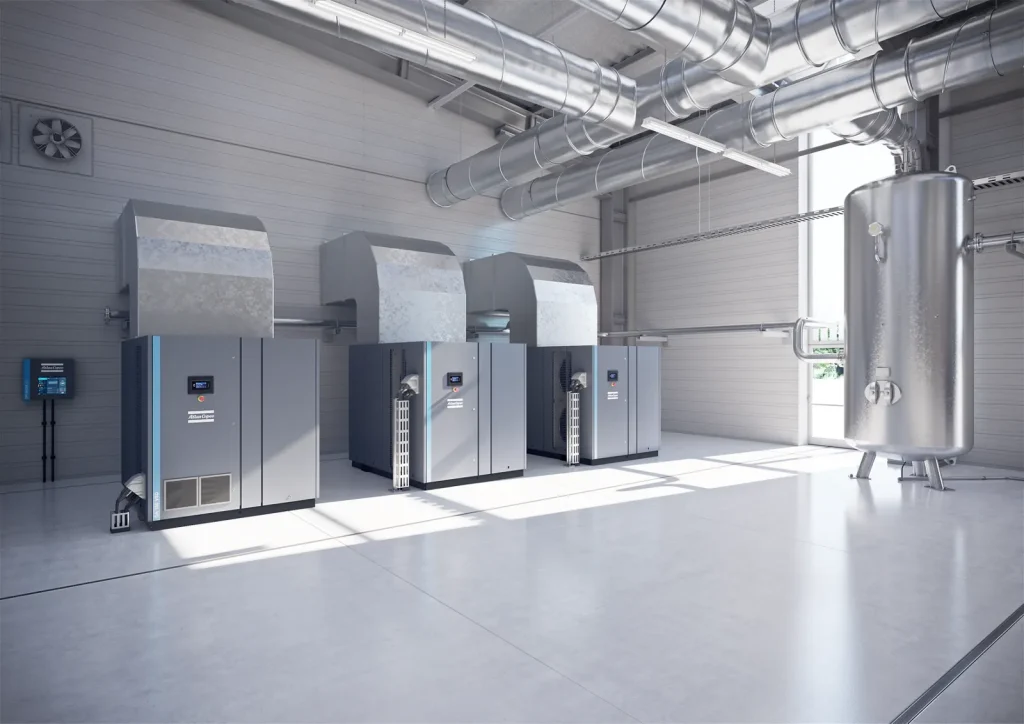
Case Studies
Real-world case studies highlight the importance of proper selection and maintenance of air compressors and filters. A manufacturing plant that upgraded to high-efficiency filters saw a 40% reduction in tool maintenance costs and a 20% decrease in downtime. Switching to low-pressure-drop air filters in HVAC systems resulted in energy cost reductions of 15-36%. One case showed an 80% reduction in filter change labor after switching to more efficient filters. Poorly maintained air filters can lead to inconsistent ink application in printing companies due to fluctuating air pressure. Upgrading filters reduced material waste by 30% and increased operational uptime.
Oversizing compressors due to improper consideration of site conditions can lead to increased power consumption. Improper control schemes for multiple compressors can result in wasted energy and elevated pressure, increasing energy consumption by approximately 15%. Undersized compressors can cause pressure drops and incomplete tasks, while oversized compressors increase acquisition and operating costs. One case study demonstrated energy savings of up to 17% and operational cost savings of around $4,000 per year by upgrading to an energy-efficient compressor. Optimizing compressed air systems can achieve energy savings of 20-50%. Often, 15% energy savings can be achieved with simple measures in less than 2 years. These real-world examples demonstrate the significant impact of proper air compressor and filter selection and maintenance on operational efficiency and cost savings. Conversely, incorrect selection or poor maintenance can lead to significant negative consequences.
Reliable Sources of Information and Further Guidance
When selecting an air compressor, consulting reputable sources of information is crucial. The Compressed Air and Gas Institute (CAGI) is a leading authority on compressed air systems, providing technical resources, educational materials, performance verification programs, and selection guides. Their “Compressed Air and Gas Handbook” is an essential reference. The U.S. Department of Energy (DOE) offers information, tools, training, and standards related to energy efficiency in compressed air systems. They have established mandatory energy efficiency standards for certain compressors. Technical publications from leading compressor manufacturers such as Atlas Copco, Ingersoll Rand, Kaeser, and Quincy Compressor also provide valuable insights and specifications. Consulting reputable sources like CAGI and DOE, as well as information from leading manufacturers, is essential for obtaining accurate and up-to-date guidance on air compressor selection and energy efficiency standards.
Conclusion and Recommendations
Selecting the right air compressor for a specific application requires careful evaluation of various factors. Understanding the application needs (PSI, CFM, duty cycle), assessing the characteristics of different compressor types, prioritizing energy efficiency, planning for maintenance, and considering cost factors (initial and operating) are essential. Adopting a comprehensive system approach that includes proper air treatment (filtration and drying), adequate storage, and efficient piping is crucial. It is recommended to conduct a thorough air system assessment to accurately determine needs and identify potential optimization opportunities.
For specific applications and complex systems, consulting experts and utilizing resources from reputable organizations like CAGI and DOE is advisable. Investing in a properly sized and energy-efficient air compressor will yield significant long-term benefits, including reduced operating costs, improved reliability, and enhanced productivity. Making informed decisions about air compressor selection, considering all relevant factors, and taking a systematic perspective will lead to significant long-term benefits in terms of cost, efficiency, and reliability.
Reference
1. What Size of Compressor Do I Need?
2. Selecting an air compressor
4. Applications of Air Compressors for Personal and Professional Use
Related Products
-
Atlas Copco Air Compressor G-Series
$8,000.00 – $10,000.00 -
Atlas Copco Air Compressor GA11+ – 30 FF
$880.00 – $1,800.00 -
Atlas Copco Air Compressor GA110VSD
$6,800.00 – $10,000.00 -
Atlas Copco Air Compressor GA132
$6,800.00 – $10,000.00


